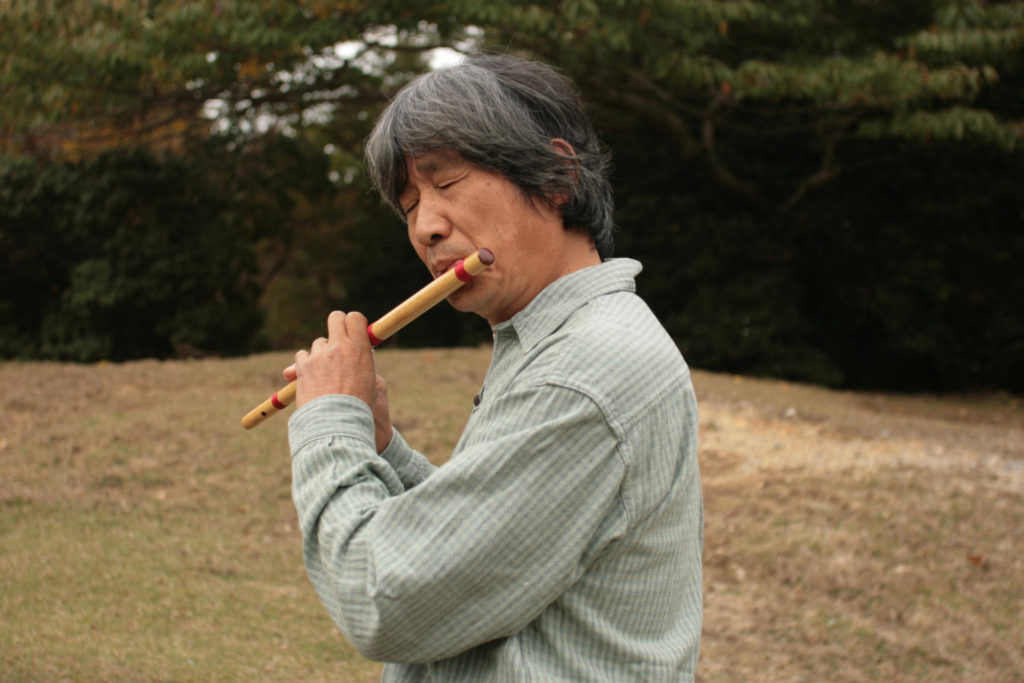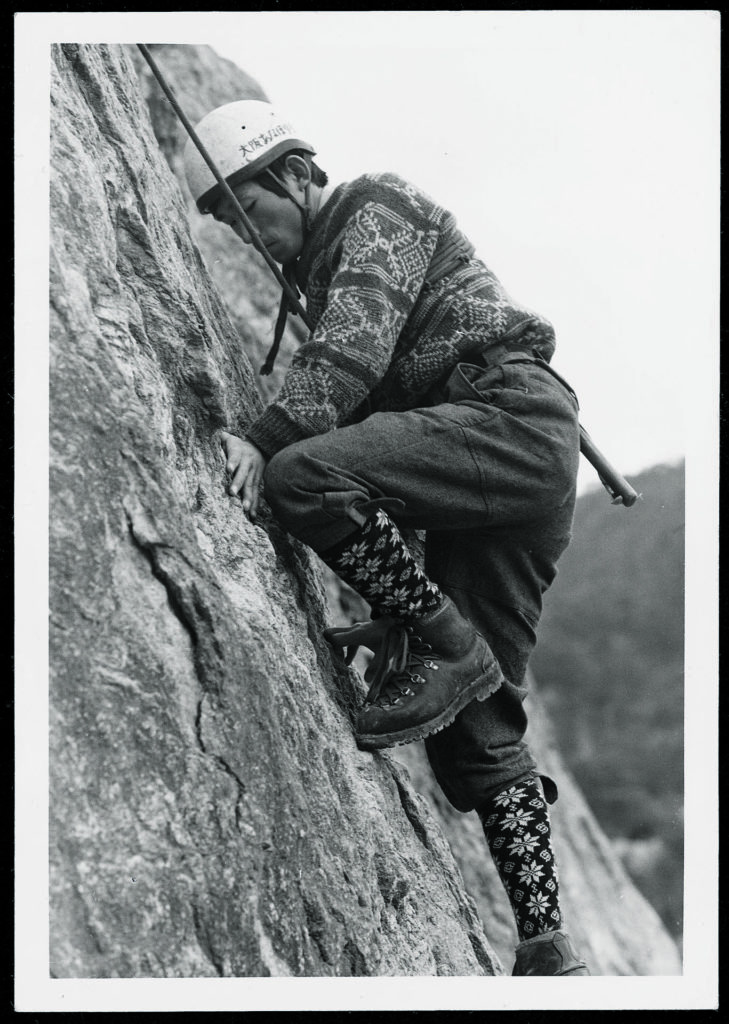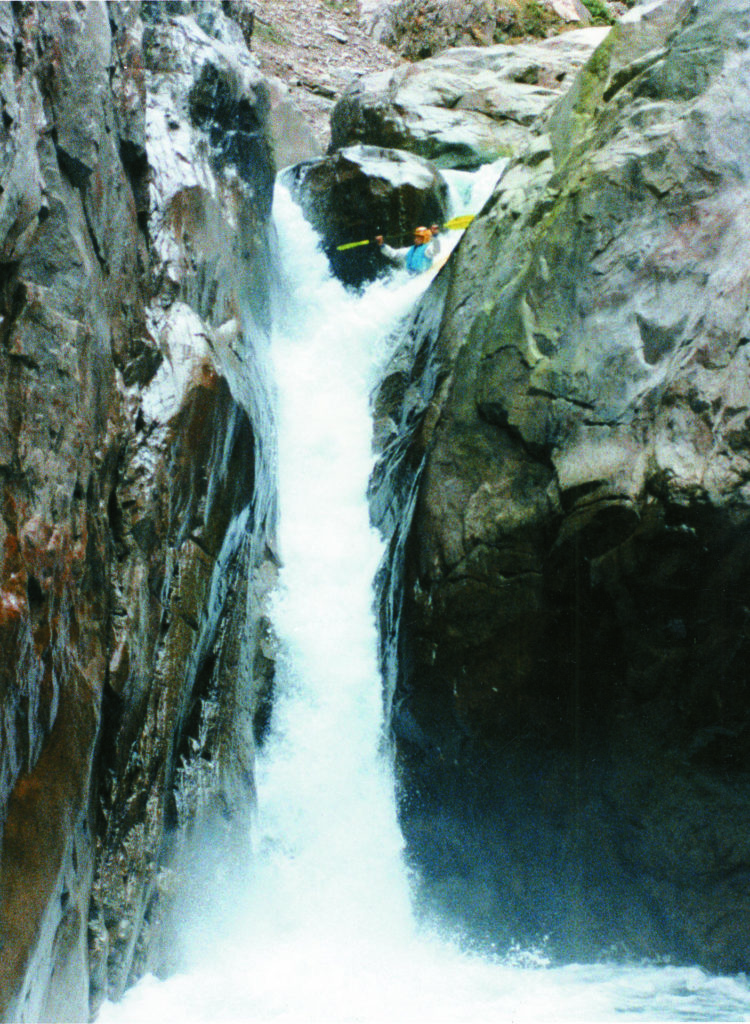MontBell is undoubtedly the biggest player in the Japanese outdoor market, with not only 68 domestic retail outlets around the country, but a full line-up of clothing, tents, sleeping bags, backpacks, boats and all other kinds of gear down to its unique (and very Japanese) camping-kit tea sets (complete with plastic whisk). The man behind the company is Isamu Tatsuno, climber, kayaker, adventurer and entrepreneur.

We met at his house almost within Nara Park (complete with deer droppings outside the walled entry)—a lovely, wooded home with many traditional touches, an attached tea house and towering ancient trees. Yet the property is unpretentious; a nice home befitting a man who drives a Prius and prefers to head a privately-owned company because, he says, “If it’s a public company, it’s just profit, profit, profit. If I’m the only shareholder, then I don’t have to care about that.”
1. Your company has been successful in Japan for some time. What has happened for Isamu Tatsuno over the past 10 years?
Well, this house was built about 10 years ago…. I have to ask my wife to be sure, but it was about then (Ed.—she notes it was in fact 13 years). Before that we were living in Sakai, in Osaka. I really liked the area around Nara Park, so I asked a real estate company if some land was available, and luckily it just happened this was available. It used to be the residence of a priest at Kofukuji. The temple had 17 locations like this, but the temples were broken up during the Meiji Restoration.
The house was built using recycled redwood from the west coast of the U.S. Redwood trees can be thousands of years old, of course, and they used to cut them down to build bridges and storehouses and things like that.
Don Banducci, the guy who founded Yakima Products, the rack company—he’s a crazy kayaker, too, and a good friend. He sold Yakima and as his second business began recycling redwood. I really wanted to use some of this great old wood, and I ended up importing 12 40-foot containers of it.
I used the best to build the house—not all of it, but a lot of the exterior. Redwood is really resistant to rain, so it’s great for the exterior. Some of it was used for wine barrels, and that was especially beautiful wood. But we thought we were going to get drunk during construction because of the strong wine smell.
2. You’re known for your outdoor adventures, especially the climb of the Eiger in 1969.
I was 21 at the time, the youngest to do it, and my idea was to do it light and fast. Mitsumasa Takata was the first Japanese to do the climb, but his partner was killed, so my team was the first to survive. There were a couple of ideas I had in mind as I approached the climb. They were, “Function is beauty,” “Every single line has a meaning” and “Do it simple, and it will be beautiful.” These ideas are true for climbing, and it’s been true for our gear as well.

We really did climb it very quickly. That picture of me we use a lot in the company is a good one, and it’s the only one of the climb. We dumped my camera, our food, our ropes—everything, and then went light and fast the rest of the way. We did bivouac during the climb, but I think we might have been able to make it all the way in one day.

We thought, if the weather went bad, we might not be able to go on, so we made the decision to stop. There’s really only one space, about the size of a table, up on the face. There was a Yugoslav party there, too—they started out a day ahead of us, and we passed them on the way up.
Those were still tough years for their country so, when we said we were going to throw out our stuff, they asked for it. We gave them the camera, our rope and food, and they slowly kept going. It took them two days. We were trying to be fast and light, and they were heavy and slow, but they were the first successful Yugoslav team.
3. Were you climbing in a university alpine group or something like that?

I only went to high school—me and Yvon Chouinard (friend, and founder of both Patagonia and the company that proceeded Black Diamond). I like to kid with him that we have our MBA degrees—“Management by Absence,” though now I teach at a university.
By the time I was 16, I had two dreams. I wanted to be the first Japanese to climb the north face of the Eiger, and I would start my own outdoor-related business by the time I was 28. I was really committed to those two goals, so there was no need to go to university. In those days, all the university students were out protesting the Japan-U.S. security treaty, so nobody was studying anyway. I didn’t really need to go.

I started mountain climbing by myself and trained without the help of a teacher. I didn’t have a partner, so I sort of made my own self-rescue methods. I fastened a piton into a tatami mat, attached a carabiner and rope, and imagined what would happen if I fell. There weren’t many guidebooks back then; there were people climbing, of course, but I didn’t have much to do with them.
Later, I founded Japan’s first rock climbing school, when I was maybe 23 or 24. In the first group that signed up for rock climbing was a guy who is still with me—he’s the president of MontBell today. He was a high school student then and the first person to sign up for classes. So it’s all kind of connected.

4. How did MontBell begin?
I founded the company 36 years ago, in 1975. I can’t remember when we built the house, but I remember when I started the company. I was still doing outdoor things; a trading company, a small company specializing in industrial textiles—things like nylon cord for tires.
It was there I learned about things such as Kevlar, the material used in bullet-proof vests, and Nomex fire-resistant material. There wasn’t much good material used in climbing equipment in those days, so I started to think you could have much better products if you used those kinds of materials, and I had vowed to start my business by the time I turned 28.
5. What was the first product?

Officially our first product was a sleeping bag. Before then, sleeping bags had a kind of cheap image, and they were filled with down. Down is light and warm but, when it gets wet, it just goes flat. Synthetics in those days were bulky and heavy.
DuPont in the U.S., though, came up with HolloFil 2—the fibers looked like macaroni and were hollow inside. It compressed to a compact size, then expanded really well when it was laid out. So at first we imported one bale from DuPont and went to a futon manufacturer in Nara to process the fibers. The HolloFil was really slippery, so it turned out to be difficult. But we figured it out, and that’s where we started.
6. What’s happened with MontBell over the past 10 years?
The company has really changed. It seems like we change in 10-year intervals. The first 10 years we were a wholesaler but one that sold to other wholesalers. The next 10 we opened direct sales shops, along with more direct wholesaling. Then the following 10 were more direct marketing, direct sales to consumers. In the last 10 years, we’ve opened a lot more MontBell shops.
From being primarily a manufacturer, we’re more of a comprehensive marketer today. We sell our own products and those of others, so we provide a one-stop shopping.
We’ve also been in the U.S. market since 2002, with our store in Boulder, Colorado. We had been there before with a store in California, but it was difficult to compete, and we pulled out. But if you completely leave the market, then people will start using your know-how—they’ll say, “Oh, they’re not here, so maybe it’s OK.” We did have some legal trouble that was resolved in our favor. So we decided we have to throw out our anchor and set up our base camp in the States.
One thing that’s interesting is the MontBell Club membership has really taken off. We started the Club 20 years ago and now have 270,000 members. They pay a fee of ¥1,500 every year which has an important meaning behind it. For many organizations you just pay once, but we ask for the fee every year—and with 270,000 people, that’s ¥405 million. We give a portion of that to social activities such as earthquake relief or to people who are doing special things.
Yvon Chouinard asked me about giving one percent of the company’s profits in Patagonia’s 1% program, but I took a different approach. Instead of the company money, we use the Club fees.
My goal is one million members in 10 years. Well, maybe 30 years…. Politicians have elections; for MontBell we have our Club members. As long as the membership grows, it shows we’re doing the right thing. If it decreases, then it’s bad news, and we need to change the system because something’s wrong. So it’s a very good barometer of our actions—our annual examination.
7. For some companies, the founder or the leader is also the face of the firm. Are you the face of MontBell?
In the outdoor market today, the only founder/owners who have been going on for all these years are me at MontBell and Yvon Chouinard at Patagonia. Everyone else has sold the company or been acquired by another company. With Patagonia, Yvon is very much identified with the company, but I don’t know about myself. People don’t join the MontBell Club because they know me, but because they know the company.
I guess a company does need some figure to represent it, but it won’t last forever. I’d like for people to say someday, “What happened to Tatsuno? Where did he go?” Gradually I’ll just disappear—that would be the best way. Then the company brand name speaks for itself.
8. Are the environment and social responsibility becoming more important focuses for Japanese companies, especially outdoor-related companies such as yours?
Yeah, I’m interested in doing more. I’ve been involved with issues such as toilets in mountain huts—I’m speaking on that in a few days. I’m interested in seeing that tax money gets used correctly for women’s issues, the environment; those kinds of things.
I am concerned about the fantastic natural world of Japan. We get to use it free of charge, and that’s where we make our money. Mountain huts, too. Is that right? For us as a mountain climbing goods maker, what is the right way of doing things?
The tax system in Japan is very different than the U.S. There the concept of donations is well understood and part of the system. Corporate tax is much lower in the U.S., whereas in Japan it is up to 50 percent. The money the company has left over is completely different in Japan than in the U.S., so our ways of donating and contributing will be different, too.
9. Is MontBell a democracy or more of a monarchy?
For me, I’m kind of…well, I don’t like to talk about things too much, but just do it. You know, “The argument is over, now it’s time to act (laughs, then says in English), “Your argument is not requested.” English is really convenient; sometimes clearer than Japanese.
With MontBell, I can make the decisions. I’m the baby of eight kids. When you’re the baby, well, take this persimmon as an example. There are two persimmons and three kids. The oldest kid will always give shares to the youngest. The baby, though, may give part away, but he always keeps his share.
That’s my way, too, I guess. With MontBell, I keep my portion then share the rest with everyone else—that’s sort of my imagination of how the company works. So I am the chairman, but also the CEO. It’s not like a typical Japanese chairman who is sort of an advisor.
10. Are you still active in the outdoors? Anything you’d like to do in retirement?
Yes, over the years I had a number of first ascents and first descents. I did a lot with my kayak, like the first descent of the Kurobe River from headwater to mouth. I went down the Colorado three times (the first Japanese), trips in Nepal and Costa Rica. I did the extreme stuff when I was younger, so I don’t climb as much, but I still kayak. I still like river kayaking more than sea kayaking, though I do both—it’s more exciting.
One thing that was fun several years ago; we took an old bus from a nursery school and rebuilt it as a camper. My wife and I drove it all over Japan. We had a kayak on board, I did some mountain climbing, and we went from Kyushu to Hokkaido. There weren’t laptops in those days, so I brought a slide projector and gave shows.
We had MontBell dealers all over Japan, so they would set up events, and I’d give a talk. Instead of payment, we’d ask for some rice or something, so we sort of ate our way around Japan, and that was fun. I’d like to do that again. My wife wants an onsen every night, but I don’t care. I could just eat at convenience stores and be happy (laughs).





